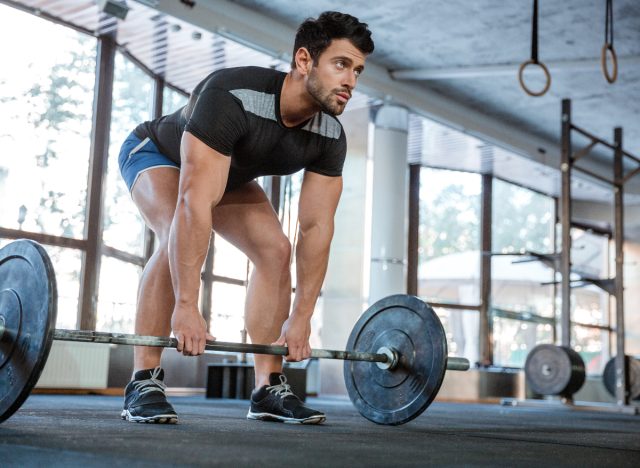If you ask 10 different personal trainers what they believe is the #1 most effective exercise to build strength, you’ll probably get 10 different answers—and rightfully so.
Effective strength movements within workout programs must fulfill multiple criteria to be justified. First off, they need to build strength efficiently, and compound movements excel. These exercises engage numerous muscle groups simultaneously, often targeting the entire body and facilitating the lifting of heavier weights. The ability to load the movement with significant resistance is crucial. For instance, comparing a dumbbell row to a barbell row highlights the difference in loading capacity; typically, a barbell row allows for lifting heavier weights.
These movements must also be functional, replicating real-world movements or improving functional fitness. Exercises like deadlifts, squats, and overhead presses build strength and enhance everyday movement patterns, making them essential components of any well-rounded workout routine. By combining these factors, the most effective exercises are justified; they prioritize strength development and can be loaded heavily, maximizing the potential for muscle growth and overall strength gains while providing functionality in daily life.
Read below to check out my certified strength and conditioning specialist-vetted A-tier choice for the #1 most effective exercise to build strength. And don’t worry, I round out the list so you have a better idea of what exercises to incorporate into your strength-focused gym routine!
Keep reading to learn more, and when you’re finished, don’t miss People Swear by the ‘Drunken Monkey’ Exercise for Better Sleep: ‘You’ll Sleep Better, I Promise’
What is the #1 most effective exercise to build strength?
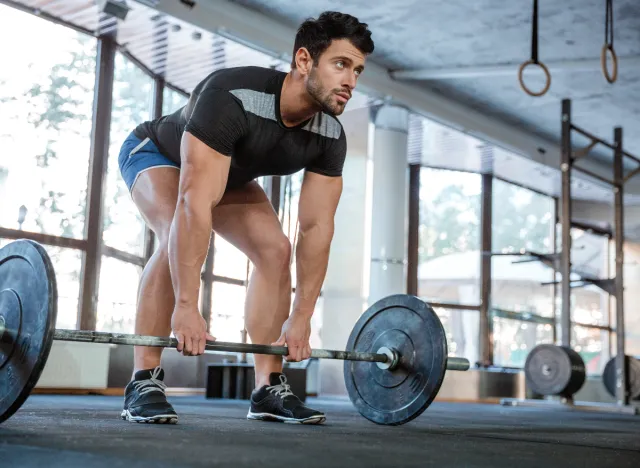
Deadlifts stand out as the #1 most effective exercise for building strength due to their unparalleled ability to engage multiple muscle groups across the entire body. This compound movement recruits muscles from head to toe, including the back, glutes, hamstrings, core, and grip, making it a cornerstone of any strength-building regimen. Deadlifts promote muscle hypertrophy and increase overall strength, contributing to functional fitness by mimicking real-world movements like lifting heavy objects off the ground.
The wide range of equipment and variations available makes deadlifts even more versatile. Whether performed with barbells, trap bars, dumbbells, or kettlebells, deadlifts offer scalability and adapt to suit different fitness levels and goals. Additionally, single-leg, staggered stance, and traditional setups allow for targeted muscle engagement and address individual weaknesses, further solidifying deadlifts as the ultimate strength-building exercise.
The best exercises to boost strength:
I may personally consider deadlifts the A-tier exercise for building strength, but there are plenty of other movements that you should include in any strength-training program. The key here is to lay out your workouts with a full-body approach, ensuring you don’t overlook any muscle groups in your weekly exercise program. Nevertheless, here are a few other strength-building options to plug into your workouts to cultivate new levels of strength and muscle—the list doesn’t end here:
Squats
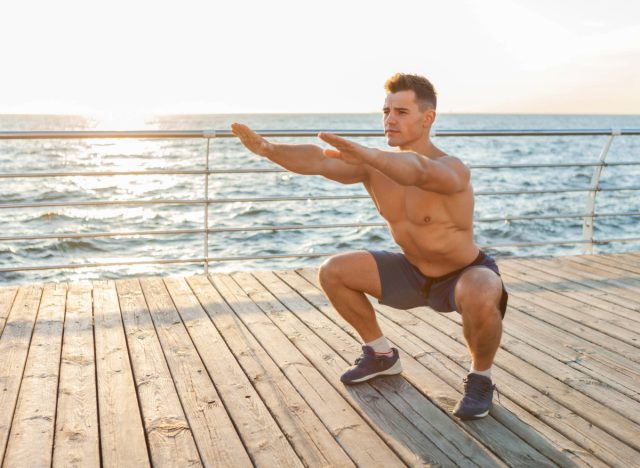
Back squats, front squats, goblet squats—the list goes on. Squats will boost lower-body strength and develop muscle mass in your quads, glutes, and hamstrings, with the bonus of core engagement.
Pull-ups

Don’t underestimate the importance of upper-body pulling strength in your strength training regimen. Pull-ups are a cornerstone exercise that targets your lats, traps, rhomboids, and smaller muscles in your upper and mid-back. Mastering the pull-up isn’t just about building muscle but mastering the art of moving your body weight, a skill that translates to overall strength and athleticism.
Hip Thrusts
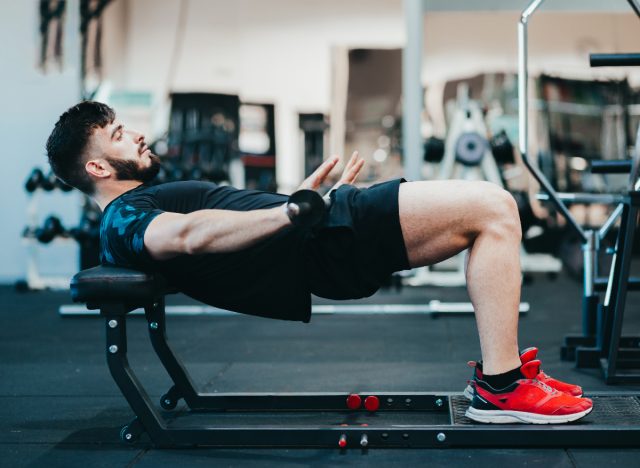
Strong glutes are the foundation of many exercises, from squats and deadlifts to dynamic movements like running and jumping. Hip thrusts are a crucial tool for enhancing posterior chain strength. By incorporating hip thrusts into your routine, you’re targeting your glutes and maximizing your range of motion, increasing time under tension, and promoting overall strength and lean muscle development.
Pushups

The ability to move your body weight directly translates to improved functional strength. Traditional, close-grip, elevated, decline, and dumbbell pushups are all excellent options for building upper-body strength and size in your chest, triceps, shoulders, and core.
Lunges
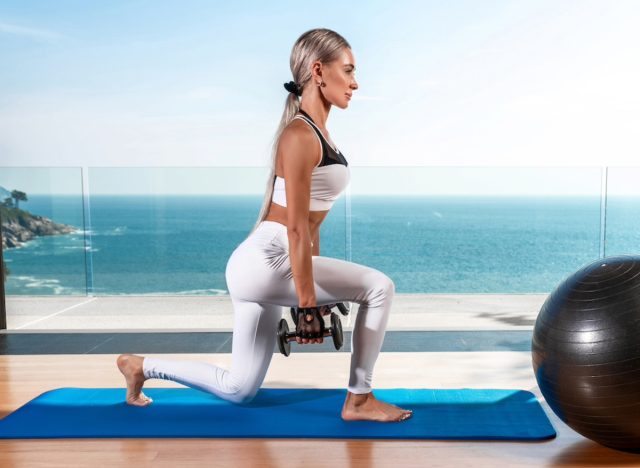
Unilateral strength and stability are necessary to improve strength and decrease the risk of injury in the lower body. Lunges of all types (and box step-ups) can serve as pivotal strength exercises in your workouts and train the quads, hamstrings, glutes, calves, and core.
Shoulder Presses

Various shoulder press variations using dumbbells, kettlebells, and barbells are instrumental in enhancing vertical pressing strength. These exercises effectively target the shoulders and triceps, contributing to both strength gains and muscle growth in these areas.
Bench Presses
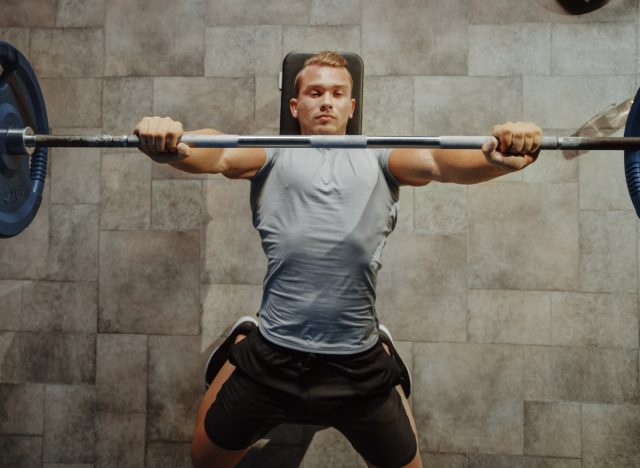
Would this be a strength article without mentioning bench press? This upper-body strength exercise is a staple in gym routines. Bench presses can significantly enhance strength and muscle mass in your chest, triceps, and shoulders. Experiment with variations such as traditional, close-grip, pause, and eccentric bench presses to keep your workouts exciting and effective.
The benefits of building strength:
Strength-building workouts offer an array of benefits beyond just sleeve-filling muscles. Focusing on strength exercises in the gym enhances overall functionality in daily life. From lifting groceries to climbing stairs, a stronger body means a stronger you, performing tasks with greater ease and reduced risk of injury. Strength training also boosts metabolism and promotes fat loss, making it a key component for your weight-loss journey.
Strength training isn’t just about sculpting the body; it’s about sculpting a healthier life. Resistance exercises can improve bone density, which is particularly important as you age. Additionally, strength training improves cardiovascular health. Beyond the physical, the confidence gained from achieving strength-related goals spills over into other areas of life, enhancing self-esteem and empowering individuals to tackle challenges with renewed vigor. In essence, the benefits of building strength extend far beyond the physical realm, enriching both body and mind for a more fulfilling life.

